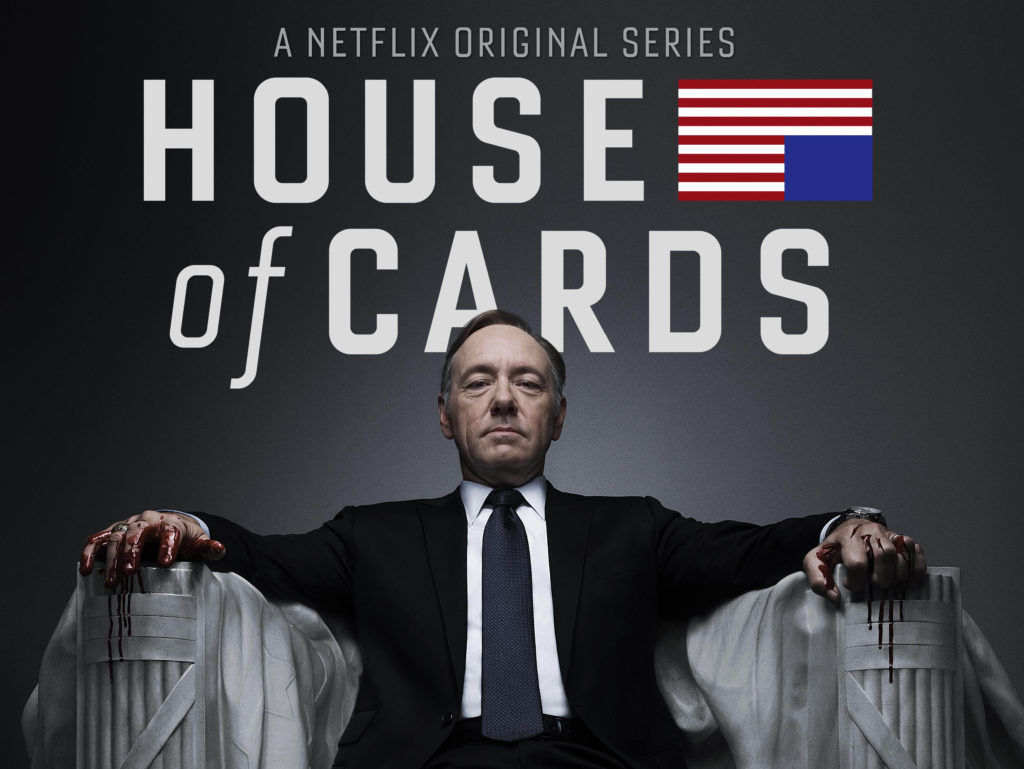With the resounding success of Daredevil, Netflix and it’s new partner, Marvel have renewed the faith of long suffering Daredevil fans as well as proven once again that both companies can deliver top notch entertainment. Marvel has dominated the big screen for almost a decade and is now poised to do the same on the small screen and mobile devices through it’s partnership with Netflix. This “Marvel Team Up” of sorts opens a myriad of story telling possibilities and enables companies like Marvel to produce content without the financial risk associated with summer blockbuster movies. Daredevil and shows like it don’t need $70 million opening weekends to be a success and allows Marvel to augment it’s Cinematic Universe by telling smaller, well produced narratives.
Netflix also benefits with the addition of new original programming to go along with its critically acclaimed roster of shows including House of Cards, Orange is the New Black and Arrested Development. Netflix has transformed itself from a glorified streaming video store into a studio that produces award winning original content. Not only is Netflix a game changer, its redefined how we watch TV. It has “stream” lined television and with HBO Go now being available on Apple TV cable television may look radically different in a few years – if it’s here at all.
In early 2013, Comix Asylum first looked at Netflix and the possibilities it presented when the company first dipped it’s toe into the waters of original programming. Here’s a look at what we had to say:
“Stream” Lining Television
In addition to its catalogue of television shows and movies, Netflix, the streaming video service, has once again decided to dip its toe into the choppy waters of original programming. Sense8, a new sci-fi series from the minds of Linda and Larry Wachowski and J.M. Straczynski is coming to Netflix in 2014, for a 10-episode run. With powerhouse creators like the Wachowskis (the Matrix trilogy, V for Vendetta, Cloud Atlas) and Straczynski (comic book scribe on The Amazing Spiderman, Thor, Wonder Woman and the creator of Babylon 5), Sense8 promises to be a welcome addition to the sci-fi landscape. Little is known about the series at this point, but according to the Wachowski’s on Netflix’s website, the idea for Sense8, was conceived out of discussions they had surrounding the “paradox” that is created by “the ways technology simultaneously unites and divides us.”
Sense8 joins Lilyhammer, House of Cards starring Kevin Spacey, the recently released Hemlock Grove, and the upcoming new season of cult favorite, Arrested Development on Netflix’s fledgling roster of original content programming. At first glance, Netflix’s attempt to become a network, like a streaming version of AMC or HBO, wouldn’t cause anyone to raise a ‘Spockian eyebrow’ until you take a deeper look at the strategy behind the way they have decided to deliver their programming. Earlier this year, Netflix turned heads when they announced that they would be releasing all 13 episodes of their political drama, House of Cards at the same time so viewers could watch the entire series all at once. Instead of watching the series from week to week, viewers now had the option of watching it at their own pace. They could stretch out the 13 episodes for as long as they wanted to, or they could watch it “buffet style” and be done with it in less than a day.
While Netflix’s decision to release an entire season at once may seem strange, it reflects the manner in which many viewers today are watching television. With busy schedules, DVR’s, and a plethora of mobile devices with the ability to play movies and television programs at their disposal, viewers often ‘chunk’ the time they spend watching their favorite shows. It’s not uncommon to hear that someone watched multiple episodes or even a season or two of Walking Dead or Game of Thrones over the course of a weekend. The ability to do this is quite possible particularly when a season for some series runs between 6 and 13 episodes. When you think about it, there really is no difference between watching 13 episodes of “insert your favorite show here” from your DVR or through a portal like Netflix.
The days of watching a network roll out 22 episodes of a series over 9 months will continue, but with networks like AMC and HBO producing shows with shorter episode runs, 10 to 13 for example, that may change. Shorter seasons have impacted the way we watch television as well as how the shows are made. One of the benefits to the viewer is that the narratives are more focused. Audiences don’t have to sit through 22 episodes to watch the 10 or so core episodes that make up a show’s canon each season. Now don’t get me wrong, I love rolling through 22 episodes of my favorite shows each season, but some weeks can be downright disappointing. Add to that the prolonged breaks where episodes are repeated around Christmas and just before the May Sweeps period, and following your favorite shows can be frustrating.
There is still something to be said for networks building the hype to entice viewers to sit and watch new episodes each week of shows like Supernatural, Walking Dead and Breaking Bad, particularly for advertisers, but change is imminent. Netflix’s model can stagger the fan reaction to a show as viewers may be watching different episodes of a show at any given time. Some viewers may be on episode three while others may have already finished the season. Moving away from communal T.V. watching may even negate some of the social media “water cooler” buzz that can make a show transcend its broadcast window. If more shows go the way of Sense8, then that aspect of fan reaction may change. Advertisers will also have to adjust, as commercial breaks don’t exist on Netflix’s content. Advertisers will just have to find different ways to get their product noticed. Advertising on the hosting site or using product placement in the shows and films could solve that problem. If Sense8, House of Cards and Arrested Development are well received and are financially profitable for all involved, it could open the door for more studios to produce content this way.
Now sit back, close your eyes for a second and think about this: what if shows did a “Veronica Mars” and went all Kickstarter to fund small runs of the shows and films fans really want to see? The producers behind the Veronica Mars series smashed crowd-sourcing records by raising over $5 million dollars through Kickstarter to fund a feature film based on the television series. The film will be distributed by Warner Bros. and is slated to be released sometime next year. If it can work for Veronica Mars then perhaps the door is open for it to work for other projects.
How would you feel about watching 5 episodes of a new Buffy or Serenity series funded by you the fan? What about a new Star Wars series for television? Disney could create loads of content for their soon to be expanded Star Wars universe without derailing plans for the new movies. As an example, imagine the hype around a Boba Fett television series. Five to ten episodes of a series like that on a service like Netflix, if done well, could be quite an event.
Are five-episode seasons too short for you? Look across the Atlantic at shows like BBC’s Sherlock, Luther and E4’s Misfits. The seasons for these shows run from three to six episodes and have running times from one hour to ninety minutes. All of these shows are well written, have excellent production values, and are well received by viewers and critics. The short production schedules also allow for A-list talent to jump aboard these productions without interfering with their motion picture commitments. Idris Elba and Benedict Cumberbatch are two such examples. Cumberbatch is the lead villain in Star Trek Into Darkness and Elba stars in this summer’s Pacific Rim. Both are busy actors but still have time for work in television. Cumberbatch and Elba will soon be gracing television screens once again as both Sherlock and Luther are currently in production for Series Three of their respective shows.
While it’s still too early to tell, Netflix’s model may change the way studios produce and sell their content. It can allow for more flexibility, as studios wouldn’t have to hit home runs with expensive features, or 22-episode seasons. Netflix’s foray into original programming is risky, but it could go a long way into changing how and what we watch on our entertainment devices.
This article first appeared in the May 2013 issue of Comix Asylum Magazine.




































